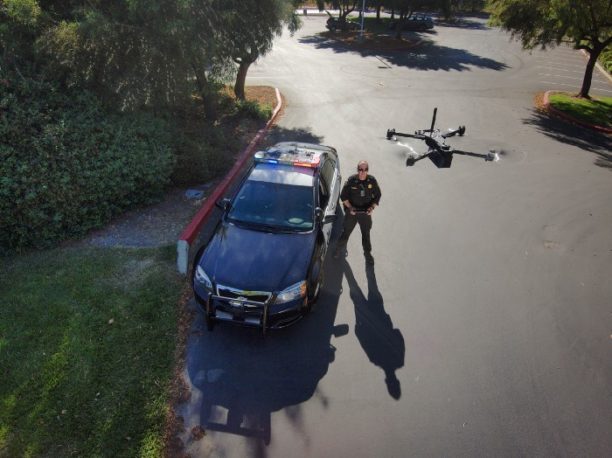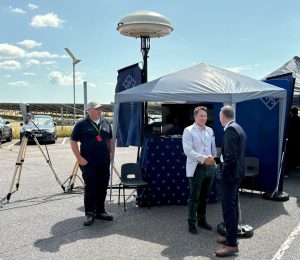Drones: Transforming Emergency Services
In recent years, drones have evolved from mere curiosities into vital tools for police and fire departments, enhancing public safety in ways that were once unimaginable. Today, drones play a crucial role in emergency services, helping first responders protect our communities more effectively.
Enhanced Police Operations with Drones
Instead of relying solely on helicopters, modern police forces deploy drones as first responders, allowing them to reach the scene quickly. For instance, when a suspicious individual is reported in a neighborhood, drones can be dispatched to provide real-time video feed, enabling officers to assess the situation safely before intervening.
Real-World Applications in Cities
- Rescuing Lost Children: Thermal imaging drones have been instrumental in locating missing children at night, saving precious time for search teams.
- Accident Scene Analysis: Drones can create 3D reconstructions of crash sites rapidly, minimizing traffic disruption and enhancing investigative accuracy.
- Handling Active Shooter Situations: Drones allow SWAT teams to monitor suspects from a safe distance, leading to quicker, safer resolutions.
The Value of Drones for Law Enforcement and the Public
- Improved Safety: Drones provide a safer way to gather information during high-risk situations, like chemical spills or hostage situations.
- Cost Efficiency: Compared to helicopters, drones offer a more economical and quiet solution for carrying out multiple missions daily.
- Accurate Evidence Collection: The ability to capture high-resolution imagery strengthens legal cases by providing indisputable evidence.
- Continuous Monitoring: Tethered drones can offer prolonged surveillance over large events, helping police maintain order.
- Integration with Existing Systems: Drones enhance situational awareness by feeding live visuals to command centers, complementing existing surveillance technology.
The Firefighting Advantage: Drones at the Forefront
Fire departments have also embraced drones, leveraging their capabilities to enhance response efficiency and firefighter safety.
Drone Contributions to Firefighting
- Comprehensive Situational Awareness: Incident commanders utilize drones to monitor fire progression, identify trapped individuals, and evaluate structural stability from above.
- Thermal Vision: Drones equipped with thermal cameras can detect hotspots within smoke-filled environments or darkness, preventing potential reignitions.
- Wildfire Management: In vast forest fires, drones map fire perimeters and predict flame paths, allowing fire teams to strategize effectively.
- Handling Hazardous Materials: Drones safely assess risky areas during chemical spills, safeguarding human responders.
- Search and Rescue Operations: During disasters such as earthquakes or building collapses, drones cover extensive areas quickly, locating survivors.
- Aerial Firefighting: Some drones can drop suppressants during wildfires, combating flames without endangering lives.
Benefits for Firefighters and Communities
- Informed Decision Making: Live data helps commanders make rapid, informed choices and update teams promptly as situations evolve.
- Cost Reduction: The operational cost of drones is significantly lower than traditional aircraft, stretching tight budgets further.
- Training Opportunities: Recorded footage from drones is invaluable for both training and post-incident analysis.
The Human Aspect: More Than Just Technology
Behind advanced drone technology are impactful stories of people saved and lives transformed.
Real-Life Rescue: A Success Story
In a small community, when a dementia patient went missing at night, drones equipped with thermal cameras quickly located him, ensuring a happy reunion with his family.
Expert Insight: Teamwork Enhances Effectiveness
Drones are designed to support, not replace, skilled first responders. Continuous training and adaptation to new technologies are essential for teams to remain efficient.
Building Trust: Community Engagement
Public trust is crucial for drone programs. Many departments host open days to demonstrate drone technology and address privacy concerns, fostering community acceptance.
Drones in Practice: Measurable Outcomes
- Emergency drones can shorten response times significantly, reaching locations within minutes and providing crucial data before first responders arrive.
- Most major cities are actively implementing drone programs to enhance public safety operations.
- Drones have revolutionized accident scene mapping, drastically reducing the time required and minimizing traffic disruption.
Avoiding Pitfalls: Learning From Experience
- Sporadic Use: Consistency is key. Drones should be integrated into regular workflows to maximize their benefits.
- Addressing Privacy Concerns: Transparent communication about data usage is essential to avoid public resistance.
- Comprehensive Training: Proper training and regular refresher courses prevent accidents and ensure drone effectiveness.
The Future of Police and Fire Drones
- Swarm Operations: Coordinated swarms of drones offer unparalleled speed and coverage for various missions.
- AI Integration: Advancements in AI will enable drones to autonomously detect threats and streamline emergency responses.
- Seamless 911 Integration: Drones that activate with 911 calls could provide immediate situational overviews to responders.
- Prolonged Flight Capabilities: New technologies are extending drone flight times, benefiting long-duration emergencies.
Nurturing Public Confidence: Ensuring Benefits Outweigh Concerns
- Transparent Communication: Agencies should actively engage with communities, providing clarity on drone data policies.
- Strict Accountability: Diligent record-keeping and restricted access to drone data uphold privacy and lawfulness.
- Human Oversight: Trained professionals review all critical footage to maintain accuracy in evidence interpretation.
Expert Advice for Starting a Drone Program
- Choose the Right Equipment: Opt for enterprise-grade drones with reliable support and security.
- Invest in Training: Regular certification ensures operators maintain high standards of safety and proficiency.
- Integration is Key: Incorporate drone data into standard procedures, enhancing overall response efficiency.
- Highlight Positive Outcomes: Sharing success stories strengthens community trust and support.
Drones in Pop Culture: Beyond Stereotypes
While popular media often portrays drones as espionage tools, in reality, they are invaluable resources in emergency services, saving lives and improving safety.
Conclusion: The Collaborative Future of Drones
Drones, in tandem with skilled personnel and effective oversight, significantly enhance public safety operations. These silent partners play a crucial role in countless emergency situations, proving that the future of community safety is already taking flight.












